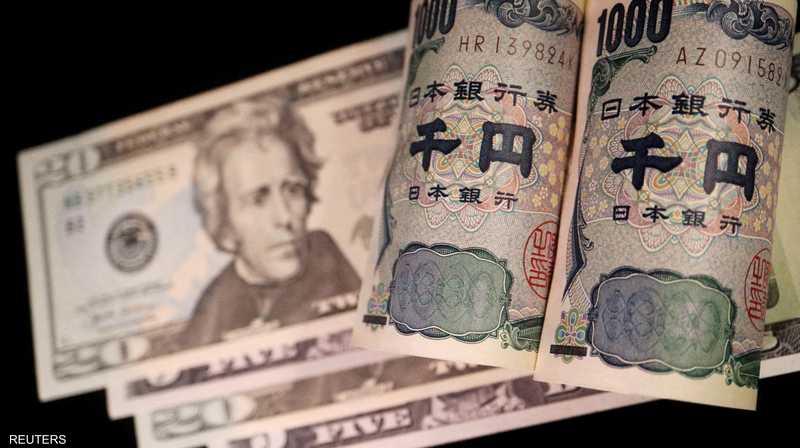USD/JPY pair is experiencing a strong upward wave, reaching its highest level in over four months at 150.92, following the Bank of Japan’s (BoJ) decision to keep its short-term interest rate unchanged at 0.50% for the fourth consecutive meeting. This move reflects the BoJ’s ongoing ultra-loose monetary policy at a time when inflation expectations have risen to 2.7% for the current fiscal year, up from 2.2% previously. This divergence—between rising inflation and low interest rates—creates further downward pressure on the yen, strengthening the case for a continued bullish trend in the near term.
The pair is currently trading around 150.60 after breaking the key psychological level of 150.00, up 0.85% on Friday. This surge is closely tied to the BoJ’s stance, which remains clear that it will only raise rates when inflation sustainably and meets its 2% target. Notably, Governor Kazuo Ueda emphasised that current inflationary pressures are still largely supply-driven—particularly due to rising food prices—which reduces the likelihood of a rapid shift toward monetary tightening. In my view, this dovish rhetoric sends a clear message to investors that interest rates in Japan are likely to stay low for longer, prompting capital flows into the U.S. dollar in search of higher returns.
Meanwhile, U.S. monetary policy remains relatively tighter, with the federal funds rate held between 4.25% and 4.50% and indications that these elevated levels could persist to tame inflation. The wide yield differential—now over 5%—between U.S. and Japanese rates supports the classic “carry trade” strategy, in which investors borrow in low-yielding yen to invest in higher-yielding assets like the U.S. dollar. I believe this strategy will remain a strong driver for USD/JPY upside in the medium term, unless the BoJ significantly changes its tone.
From another perspective, Japan’s fragile domestic consumption continues to act as a barrier to any imminent tightening. Although inflation has increased, wage growth has not yet gained sufficient momentum to boost consumer purchasing power—something Governor Ueda himself acknowledged. Raising interest rates in such an environment could dampen domestic demand further, potentially harming the economic recovery. Therefore, I expect the BoJ to remain cautious until clearer signs of sustained wage growth emerge.
On the global trade front, Ueda noted that the recent trade agreement with the U.S. is “a significant step forward,” but insufficient on its own to prompt an immediate policy shift. Structural changes in trade and tariffs take time to filter through to the real economy. At the same time, recent yen volatility has not altered the BoJ’s inflation outlook, suggesting that the current 150–151 range is not seen as a direct threat by monetary authorities, lowering the likelihood of imminent intervention to support the currency.
Accordingly, I expect the USD/JPY pair to maintain its bullish trajectory, with a potential test of the 152.50 level in the coming weeks—provided there are no clear signs of a shift in Japanese policy or direct government intervention. The fundamental backdrop favouring this scenario includes the stark contrast in monetary policy between the U.S. and Japan, ongoing capital flows into the dollar, and the BoJ’s persistently dovish tone. Even though inflation in Japan is rising, it remains largely supply-driven rather than demand-led, justifying the BoJ’s cautious approach.
The break above the 150.00 mark has fueled bullish momentum, and a move beyond the 151.20 resistance could push the pair to levels unseen since early 2024. Conversely, any pullback below 149.50 could signal a short-term correction, though I believe it would be temporary as long as the core fundamentals remain supportive of dollar strength.
In conclusion, I believe the future of USD/JPY remains closely tied to the BoJ’s monetary stance, which currently shows no signs of imminent tightening. High inflation alone is unlikely to prompt a rate hike given weak domestic consumption and sluggish wage growth. On the other hand, the dollar remains supported by yield differentials and a more hawkish U.S. monetary policy. Based on these dynamics, I anticipate ongoing pressure on the yen and further upside in USD/JPY—while closely watching for any sudden shifts in BoJ tone or government intervention should the yen weaken beyond tolerable levels.
Technical Analysis of ( USDJPY ) Prices:
The chart reveals the formation of an Inverse Head and Shoulders pattern—an upward reversal formation that was confirmed by a breakout above the neckline near the 148.64 level, signalling a shift from the previous downtrend. Following the breakout, the USD/JPY pair launched into a strong bullish wave, breaking above the key resistance level at 150.48 (S1) and reaching recent highs around 150.60. It’s also evident that the price confirmed a bullish breakout from a horizontal consolidation zone between 146.00 and 149.00, reinforcing expectations of continued upside momentum in the near term.
Image
Image
The next resistance level lies at 151.21 (R1), followed by 152.31 (R2), which could serve as a logical technical target for the ongoing bullish wave if momentum persists. In the event of a pullback, the first support is located around 150.48 (S1), where buyers are likely to step in to reestablish positions. A break below this level could open the door for a deeper correction toward 148.64 (S2)—a key neckline level from the inverse head and shoulders pattern—making it a critical support for the continuation of the uptrend.
From a technical indicators perspective, the Stochastic Oscillator has entered overbought territory above 97, suggesting a possible minor pullback or consolidation before the uptrend resumes.
Nonetheless, the overall price structure remains bullish, with the pair trading above rising moving averages and an ascending trendline beneath current price action. The bullish scenario remains valid as long as the pair holds above 149.00, with a break above 151.21 likely paving the way toward new highs.


